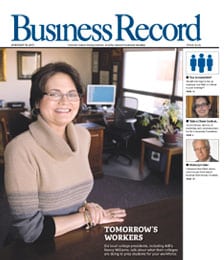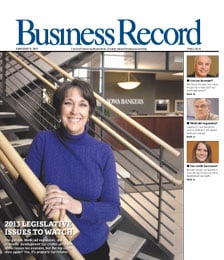Lovell: Stones and glass houses

Every now and again, the news cycle provides bits of delicious irony, and the last two weeks of coverage regarding the collapse of World Trade Organization negotiations in Cancun, Mexico, have not disappointed.
Last week’s Midwestern papers were filled with stories of U.S. farmers angered by the group of mostly Third World nations that walked out of the talks. Democratic Sen. Tom Harkin, one of the architects of the $17-billion-a-year 2002 farm bill, blamed the impasse on developing nations’ unwillingness to open their borders to imports from rich countries. “A one-sided deal that fails to level the playing field for U.S. farmers simply will not fly in the U.S. Congress,” Harkin told The Des Moines Register. The paper also quoted Brooklyn dairy farmer Craig Lang as saying “no deal is better than a bad deal.” Lang must have forgotten the Eau Claire rule, which pays dairy farmers a bonus based on how far their cows are from the Wisconsin city.
Meantime, a report issued by the Environmental Working Group, a Washington, D.C.-based research organization, only a week earlier showed that between 1995 and 2002 Iowa farmers received more money from federal programs than growers in any other state. Iowa farms took in $10.2 billion of the $114 billion that the U.S. government spent during that period.
Agricultural issues carry a great deal of clout in Iowa, even as the number of farmers and their economic contribution to the state (relative to other industries) shrinks.
In 2001, the state’s agriculture industry accounted for 3.8 percent of Iowa’s gross product, down from about 9 percent in 1986, according to the U.S. Bureau of Economic Analysis. Meanwhile, the importance of insurance, finance and manufacturing-related production to the state has jumped.
In 2001, manufacturing amounted to about 21 percent of Iowa’s gross state product, making it the most valuable sector of the state’s economy, followed by 17.8 percent for service-related businesses and 16 percent for financial services and insurance.
The number of people with non-farm jobs in Iowa has grown to 1.44 million in July from 1.29 million a decade ago, according to the U.S. Bureau of Labor Statistics. There were 399,000 people employed on Iowa farms or in related industries in 1993, according to the U.S. Department of Agriculture, and the figure hasn’t changed much since.
The point of this column isn’t to bash farmers. Instead, it’s to point out that subsidies in America and other rich nations, particularly those in Europe, which had been even less flexible about its agriculture policies than the United States, have become more about protecting a lifestyle than providing true economic benefit. Those protections come at a huge cost in terms of money, wasted opportunity and – for poorer nations – human lives.
Wealthy nations spend an estimated $300 billion annually protecting their farmers from foreign competition, and yet the World Trade Organization has projected that a new round of market opening (which Cancun was supposed to have led to) would raise global output between $290 billion and $520 billion, The Wall Street Journal reported.
All of this reinforces the need to support Gov. Tom Vilsack’s drive to shift Iowa’s economy to one that focuses on building a competitive manufacturing and information services landscape and growing crops that don’t require federal welfare.






